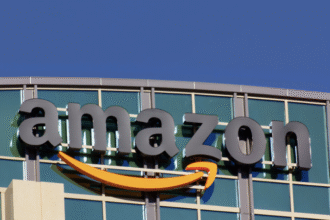Link building remains one of the fundamental pillars of SEO in 2025, but the rules of the game have evolved dramatically. With increasingly sophisticated Google algorithms and heightened competition, only the most refined and authentic strategies can make a real difference. Discover the practices that truly matter today.
The Evolution of backlink: From Quantity to Absolute Quality
The AI Revolution in Link Analysis
In 2025, Google’s artificial intelligence now analyzes the contextual relevance of links with unprecedented precision. The algorithm no longer just evaluates domain authority—it understands the semantics of surrounding content, thematic coherence, and even the intent behind the link.
This major evolution means that a single perfectly contextualized link is now worth more than ten average-quality links. Search engines prioritize links that naturally fit within a coherent content ecosystem.
The End of Obsolete Techniques
Practices that still worked a few years ago are now not only ineffective but potentially penalizing:
Techniques to permanently ban:
- Mass purchasing of links on automated platforms
- Systematic link exchanges without editorial logic
- Repetitive over-optimized anchor text
- Links from detectable content farms or PBNs
Red flags for Google:
- Abnormally rapid link profile growth
- Excessive concentration on commercial anchors
- Links from thematically disconnected sites
- AI-detectable artificial link patterns
Winning Strategies for Modern Link Building
1. Natural Editorial Link Building: The Gold Standard
The concept: Create content so remarkable that it naturally generates inbound links without solicitation.
Implementation:
- Develop exclusive studies with unique data
- Create free tools useful to your industry
- Publish in-depth market trend analyses
- Offer high-value downloadable resources
Concrete example: A marketing agency that publishes quarterly studies on advertising cost evolution with exclusive data will naturally earn citations and links from journalists, bloggers, and industry professionals.
2. Digital PR: The Art of Digital Press Relations
The strategy: Develop an authentic relational approach with influencers, journalists, and content creators in your field.
Concrete actions:
- Identify journalists specialized in your sector
- Offer your expertise for their articles
- Create press releases with high informational value
- Actively participate in industry discussions on social media
The benefits: This approach generates not only exceptional quality links but also lasting media visibility that strengthens your brand authority.
3. Strategic Content Partnerships
The principle: Develop mutually beneficial editorial collaborations with complementary players in your ecosystem.
Effective formats:
- Co-creation of industry studies
- Expert interview exchanges
- Collaboration on professional guides
- Partnerships for digital events
The advantage: These links follow a natural complementarity logic and are perceived positively by algorithms.
4. Smart Exploitation of Unlinked Mentions
The opportunity: Many brands are mentioned without being linked. These mentions represent enormous potential for easy-to-obtain links.
Method:
- Use monitoring tools to detect mentions
- Politely contact authors to suggest adding a link
- Offer complementary resources to enrich their content
- Thank and maintain the relationship
Success rate: This technique typically shows a 20-30% success rate, making it one of the most profitable approaches.
Quality Criteria That Really Matter
Contextual Authority Over General Authority
In 2025, a link from a specialized site with strong thematic authority far outweighs a link from a generalist site with strong global authority. Google now values sector relevance and domain expertise.
Indicators to prioritize:
- Topical Authority of the source site
- Semantic coherence between contents
- Target audience engagement
- Publication freshness and regularity
Link Profile Diversity
A natural link profile shows diversity on multiple levels:
Types of source sites:
- Media and news sites
- Specialized blogs
- Institutional sites
- Forums and communities
- Professional social networks
Variety of link anchors:
- Brand name (40-50% of profile)
- Naked URL (15-20%)
- Generic anchors (15-20%)
- Partially optimized anchors (10-15%)
- Exact match anchors (5-10% maximum)
Link Insertion Context
The placement and context of the link within content has become crucial:
Best practices:
- Natural insertion in editorial flow
- Link providing added value to the reader
- Coherent and informative textual context
- Logical position in content structure
Tools and Methods of 2025
Advanced Analysis Technologies
Cutting-edge profile analysis tools:
- Majestic with thematic Trust Flow metrics
- Ahrefs and its topic-based authority analysis
- SEMrush for mention monitoring
- Screaming Frog for technical link analysis
Applied artificial intelligence:
- Automated contextual relevance analysis
- AI-powered link opportunity detection
- Predictive scoring of potential link value
- Automated monitoring and alerts
Next-Generation Metrics
Link building KPIs are evolving toward a more qualitative approach:
Priority indicators:
- Qualified referral traffic generated
- Improvement in target query rankings
- Increase in topical authority
- Link profile diversification
- Referral visitor conversion rates
Specialized Industry Strategies
E-commerce: Focus on Trust and Expertise
For e-commerce sites, link building must primarily strengthen trust and commercial authority signals.
Specific approaches:
- Partnerships with product testing sites
- Collaborations with industry influencers
- Participation in product comparisons
- Creation of expert buying guides
B2B: Expertise Above All
In B2B, intellectual authority and technical expertise are the main drivers of effective link building.
Winning tactics:
- Publication of detailed case studies
- Participation in industry think tanks
- Co-creation of white papers with partners
- Speaking at professional conferences
Local: Proximity and Community
For local SEO, link building must be anchored in the geographical and community ecosystem.
Local levers:
- Partnerships with local economic players
- Sponsorship of community events
- Collaborations with local press
- Participation in regional professional directories
Anticipating Algorithm Evolution
Emerging Trends to Watch
Weak but important signals:
- Growing consideration of post-click user experience
- Valorization of links generating social engagement
- Increasing importance of mobile app links
- Analysis of link temporality and seasonality
Preparing for future evolutions:
- Continuous diversification of link sources
- Strengthening content strategy
- Developing brand authority beyond SEO
- Building a sustainable relational ecosystem
Performance Measurement and ROI
Strategic KPIs for Modern Link Building
Advanced performance metrics:
- Evolution of organic visibility weighted by commercial value
- Growth of qualified traffic from referring links
- Improvement in overall site conversion rate
- Strengthening brand awareness (Brand Search)
Real ROI calculation: Link building return on investment must integrate long-term benefits: organic traffic growth, domain authority strengthening, conversion improvements, and brand awareness impact.
Conclusion: The Future Belongs to Authentic Strategies
In 2025, effective link building is no longer just about acquiring links, but about building a coherent relational and editorial ecosystem. Successful brands are those that understand that each link must fit into a natural editorial logic and provide real value to users.
The future belongs to strategies that prioritize authenticity, relevance, and added value. In this context, link building becomes a true lever for developing brand authority, far beyond its SEO benefits alone.
The key to success lies in the ability to create links that would naturally exist in a world without SEO constraints, because these are precisely the links that tomorrow’s algorithms will value most.



